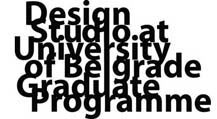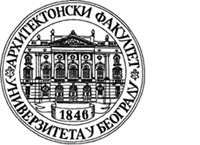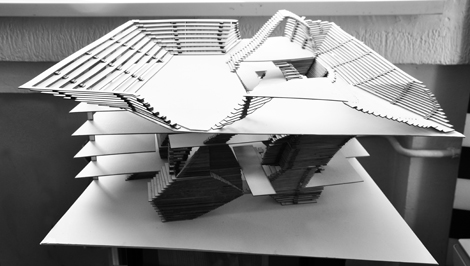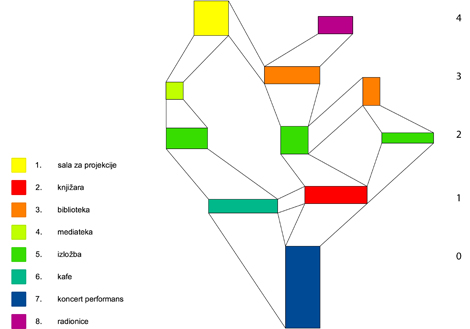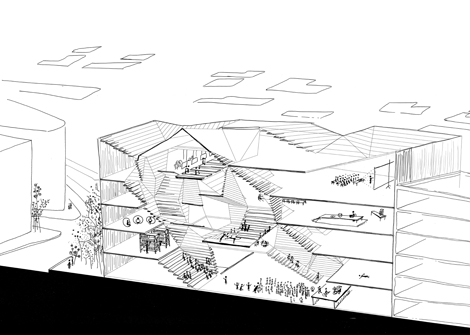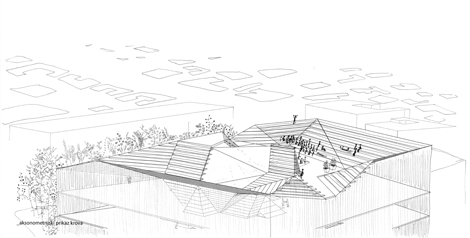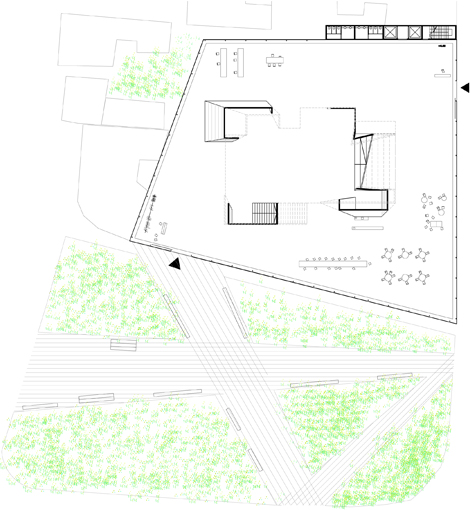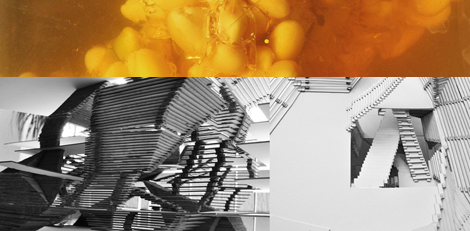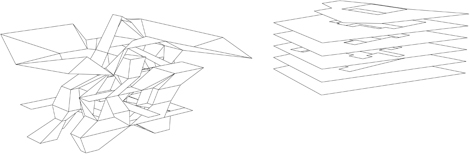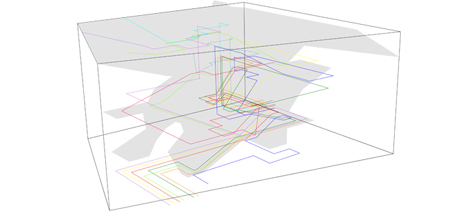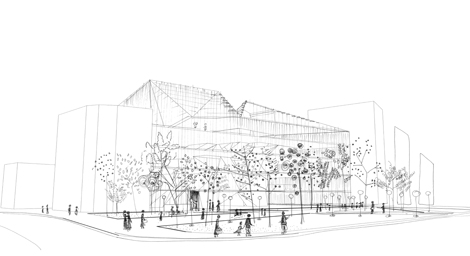In contrast to museum institutions where space organisation is precisely determined in each and every segment, cultural centers are being formed throughout their use. Such concept gives everyone an equal opportunity to find their own path through the building and to develop individual scenario of use. However, not one use is isolated. Combined together, different scenarios of use form the overall image of the space. Architecture is representing a shell which is being populated and filled with activity. Accordingly, result is always unpredictable. Building consists of two segments: public space and working space for artists. The core of the building has structural role and provides for varied circulation routes. From top to bottom, it is made of concrete perforated strips forming platforms, staircases and walls to become a place for meetings, conversation and action.
Dok je muzej u potpunosti determinisan u svakom segmentu, kulturni centar se formira kroz upotrebu. U jedinstvenom prostoru svako formira svoju putanju, odnosno scenario korišćenja. Međutim, ni jedno korišćenje nije izolovano već utiče na celokupnu sliku. Arhitektura je data samo kao osnova koja se upotpunjava delovanjem. Samim tim rezultat je uvek nepredvidljiv. Objekat grade dva različita ambijenta – prostor za umetnike ostavljen kao slobodan plan i prostor u kome su posetioci. Prostor posetioca je jezgro objekta sa konstruktivnog i programskog aspekta. Definisan je trakama perforiranih betonskih ploča čija se namena smenjuje od podesta, preko stepeništa do zida. Stepenište nije više samo čista komunikacija, ono se funkcionalno nadovezuje na programe koje povezuje, postaje centralno mesto razgovara i dešavanja.
Tags: Distributed Space, Network, Plateaus
